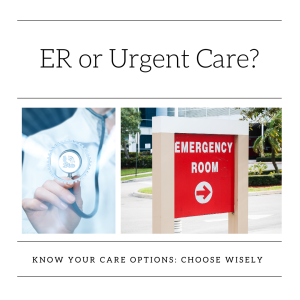
by admin | Dec 12, 2024 | Employee Benefits
 Many employee benefits are subject to annual dollar limits that are adjusted for inflation. For 2025, most of these limits have increased. However, some limits, such as those for dependent care Flexible Spending Accounts (FSAs) and Health Savings Account (HSA) catch-up contributions, remain unchanged.
Many employee benefits are subject to annual dollar limits that are adjusted for inflation. For 2025, most of these limits have increased. However, some limits, such as those for dependent care Flexible Spending Accounts (FSAs) and Health Savings Account (HSA) catch-up contributions, remain unchanged.
Key Benefit Limits for 2025:
Health Savings Account (HSA) Contributions
- Single Coverage: $4,300 (up $150 from 2024)
- Family Coverage: $8,550 (up $250 from 2024)
- Catch-up Contributions: $1,000
Important Considerations for Employers
Employers should ensure that their payroll systems are updated to reflect the new 2025 benefit limits. Additionally, it’s crucial to communicate these changes to employees to help them make informed decisions about their benefits.
By staying informed about the latest benefit limits, employers can help employees maximize their benefits and plan for their financial future.

by admin | Dec 2, 2024 | Custom Content
 For some, the lyrics “with those holiday greetings and gay happy meetings when friends come to call, it’s the hap-happiest season of all” stirs happy memories of Christmas caroling. However, for others, the holidays can be one of the most stressful and isolating times of the year. The season often brings a whirlwind of demands—shopping, baking and entertaining to name a few. For those managing mental health conditions like depression or anxiety, these challenges can feel even more overwhelming.
For some, the lyrics “with those holiday greetings and gay happy meetings when friends come to call, it’s the hap-happiest season of all” stirs happy memories of Christmas caroling. However, for others, the holidays can be one of the most stressful and isolating times of the year. The season often brings a whirlwind of demands—shopping, baking and entertaining to name a few. For those managing mental health conditions like depression or anxiety, these challenges can feel even more overwhelming.
Holiday depression can sometimes be dismissed as just the “winter blues.” During this time, many people focus more on their physical health than their mental well-being, often prioritizing weight loss over emotional care. This lack of awareness can allow holiday depression to deepen into major depression.
Here are nine tips to help manage holiday depression:
- Be Realistic – Holidays and traditions evolve as people do. Kids grow up, people relocate, and new relationships form. Embrace these changes, cherish new traditions, and appreciate memories from past holidays while being present in the current moment.
- Schedule Downtime – Spend 15-20 minutes daily for quiet relaxation, such as taking a bath, listening to music, or reading. And remember, it’s okay to say no—you don’t need to attend every party or event.
- Stay Connected – Avoid isolation. Seek social interactions, even if you can’t be home for the holidays. Invite a friend over for a chat or volunteer for a cause that interests you.
- Limit Alcohol – Alcohol is a depressant and can intensify negative emotions. Try to drink in moderation.
- Exercise Regularly – Although exercising can feel challenging when stressed, even a short walk can be beneficial. Exercise has been shown to help reduce depression symptoms.
- Focus on the Positives – Each day is a gift. Practicing gratitude has a powerful effect on mental well-being by increasing self-esteem, enhancing positive emotions, and promoting optimism.
- Manage Expectations – Set realistic goals and pace yourself. Make a list to prioritize what’s most important, helping to keep holiday activities manageable.
- Communicate with Loved Ones – Don’t hide your holiday depression from friends and family. Sharing your feelings can prevent your mental health from worsening. Be honest about what you’re experiencing, but make it clear you don’t expect them to “fix” it.
- Seek Professional Help if Needed – If you feel persistently sad, anxious, unable to sleep, or find routine tasks overwhelming despite your efforts, reach out to a doctor or mental health professional.
Don’t feel pressured to embody the “joy of the season.” With planning, self-care, and meaningful connections, you can manage holiday depression and find moments to enjoy. Be kind to yourself, keep expectations realistic, and stick to your healthy habits. By actively caring for your mental health, you can make the most of the holiday season.
If you are experiencing these symptoms over a period of several weeks, you may be depressed. Talking with a mental health professional or taking a mental health screening test can help you understand how well you are coping with recent events. Seek help.

by admin | Nov 26, 2024 | Custom Content, Health Care Costs
 All too often, illness or injury appears out of the blue: You wake up in the middle of the night with intense abdominal pain. Or your baby spikes a high fever on the weekend. These situations are stressful and it’s hard to think when you’re under stress. But you need to decide where to go to get medical care for yourself or a loved one. Understanding the levels of acute medical care before you need it can help you focus and get the appropriate help quickly.
All too often, illness or injury appears out of the blue: You wake up in the middle of the night with intense abdominal pain. Or your baby spikes a high fever on the weekend. These situations are stressful and it’s hard to think when you’re under stress. But you need to decide where to go to get medical care for yourself or a loved one. Understanding the levels of acute medical care before you need it can help you focus and get the appropriate help quickly.
Urgent care centers and emergency rooms are both great options for times when you are unable to see your primary care physician (PCP). The reasons for choosing these facilities can be because the injury or sickness has occurred outside normal office hours for your doctor or that you are out of town when an emergency hits. As you know, the first choice for non-life or limb-threatening conditions should be your regular doctor—they will have your medical history on file and your medication list at the ready. When this is not an option, you will need to make the choice on what level of care you need.
Urgent Care Centers
Urgent care centers fill the gap between when you are sick or minorly injured but cannot see your PCP and when you can’t wait for an appointment. Most urgent care locations are staffed by doctors or physician’s assistants. These centers can get you in and out quickly and some even take appointments. Since you will not see your PCP at these clinics, it’s always best to bring a copy of all the medications and dosages of meds you take. If you have a special condition, like epilepsy, make sure you disclose that to the urgent care provider you see. Most have access to x-ray machines and basic diagnostic tests. The typical range of costs for care at these centers is between $175-$200.
Here are some conditions that typically can be seen at urgent care centers:
- Fevers, flu or cold symptoms
- Ear infections
- Bronchitis
- Cuts and bleeding that may require stitches
- Urinary tract infections
- Vomiting or diarrhea
- Minor back pain
Emergency Room Care
Hospital emergency rooms provide care for life and limb-threatening situations ranging from heart attack and stroke to car accident injuries. Staffed by physicians, nurses, and specialists, emergency rooms have access to highly knowledgeable and diverse medical teams. In emergency rooms, care is given to the most serious injury/illness first—not on a first-come, first-served basis. Because of this, wait times in emergency rooms are widely varied and may be into a several hours-long wait. Again, it is wise to bring a list of any medications, both prescribed and over-the-counter, with you when seeking care since the ER will not have this information from your PCP. The average cost of an emergency room visit costs $2,700 according to UnitedHealthcare.
Symptoms that are best evaluated in an emergency room include:
- Chest pain or difficulty breathing
- Weakness/numbness on one side
- Slurred speech
- Fainting/change in mental state
- Serious burns
- Head injury
- Concussion/confusion
- Broken bones and dislocated joints
- Seizures
- Severe cuts that may require stitches
- Vaginal bleeding with pregnancy
When deciding between urgent care and the emergency room, start by assessing your symptoms. Ask yourself, “Is this condition life-threatening or likely to cause permanent damage?” If the answer is “yes,” head to the nearest ER. If it’s “no,” take your non-life-threatening injury to an urgent care center for stitches or treatment. Choosing the right care option saves you both time and money!

by admin | Nov 19, 2024 | Flexible Spending Accounts
 On October 22, 2024, the IRS announced that the limit on employees’ salary reduction contributions to a health Flexible Spending Account (FSA) will increase to $3,3000 for plan years beginning in 2025. This is an increase from the 2024 limit of $3,200. By understanding the latest contribution limits, individuals can better plan for 2025 and see how the new limits can enhance tax savings.
On October 22, 2024, the IRS announced that the limit on employees’ salary reduction contributions to a health Flexible Spending Account (FSA) will increase to $3,3000 for plan years beginning in 2025. This is an increase from the 2024 limit of $3,200. By understanding the latest contribution limits, individuals can better plan for 2025 and see how the new limits can enhance tax savings.
What is an FSA?
An FSA is a tax-advantaged savings account that allows you to set aside pre-tax dollars to pay for eligible medical expenses. This can help you save money on your tax bill and reduce your out-of-pocket healthcare costs.
Key Points to Remember:
Use It or Lose It: Generally, any unused funds in your FSA at the end of the year are forfeited.
Qualified Expenses: Eligible expenses include doctor visits, prescription medications, dental care, and more.
Employer Contributions: Some employers may offer additional contributions to your FSA.
How to Maximize Your FSA Benefits:
Plan Ahead: Estimate your annual healthcare costs and adjust your FSA contributions accordingly.
Use Your FSA Wisely: Keep track of your expenses and use your FSA funds throughout the year.
Check for Grace Periods and Carryover Rules: Some plans offer grace periods or allow you to carry over unused funds to the next year.
Why Are FSA Contribution Limits Higher for 2025?
FSAs offer significant tax savings by letting individuals use pre-tax dollars for eligible medical expenses like copayments, deductibles, and prescription or over-the-counter medications. With the new 2025 limit of $3,300, participants can allocate even more toward healthcare costs, reducing their taxable income.
For FSAs that permit unused funds to carry over, the maximum carryover has risen to $660, which represents 20% of the new FSA limit. This adjustment aligns with the increased contribution cap, providing greater flexibility for managing healthcare costs from year to year.

by admin | Nov 11, 2024 | Employee Benefits
 Employee benefits can be a complex landscape, filled with acronyms and unfamiliar terms. In fact, more than 50% of American adults report that they don’t have a clear understanding of their health insurance. Many people are confused because they reach adulthood without ever learning the basics of health insurance terminology. Illiteracy about health insurance is costly to employees and employers alike. Educating employees on common benefits lingo can help them make informed decisions and maximize their benefits.
Employee benefits can be a complex landscape, filled with acronyms and unfamiliar terms. In fact, more than 50% of American adults report that they don’t have a clear understanding of their health insurance. Many people are confused because they reach adulthood without ever learning the basics of health insurance terminology. Illiteracy about health insurance is costly to employees and employers alike. Educating employees on common benefits lingo can help them make informed decisions and maximize their benefits.
We have created a list of the most common terms to help your employees understand and better utilize their health benefits:
- Ancillary (or Voluntary) Benefits: Supplemental benefits not included in most traditional group health insurance plans.
- Co-payment: An amount you pay as your share of the cost for a medical service or item, like a doctor’s visit. Co-pays are most common for emergency room, urgent care and prescription drugs. In some cases, you may be responsible for paying a co‐pay as well as a percentage of the remaining charges.
- Co-insurance: Your share of the cost for a covered health care service, usually calculated as a percentage (like 20%) of the allowed amount for the service. For example, if your plan has a 30% co-insurance rate, the carrier will pay 70% of the allowed amount while you pay the balance.
- Deductible: The amount you owe for covered health care services before your health insurance or plan begins to pay. For example, many plans require an individual to pay $1,000 in cumulative deductibles before they begin paying out.
- Dependent Coverage: Health insurance coverage extended to the spouse and unmarried children up to age 26 who are totally or substantially reliant on their parents for support, thereby defined as “dependent children”.
- Explanation of Benefits (EOB): Every time you use your health insurance, your health plan sends you a record called an “explanation of benefits” (EOB) or “member health statement” that explains how much you owe. The EOB also shows the total cost of care, how much your plan paid and the amount an in-¬network doctor or other healthcare professional is allowed to charge a plan member (called the “allowed amount”).
- Formulary: A list of prescription drugs covered by a health plan that often has different tiers based on the type of covered medication. Prescription medicines listed in one tier may cost you more than those in another tier.
- In-Network Provider: A provider who has a contract with your health insurer or plan to provide services to you at a discount. In-Network providers have contracted with the insurance carrier to accept reduced fees for services provided to plan members. Using in-network providers will cost you less money.
- Open Enrollment: A period during which a health insurance company is required to accept applicants without regard to health history.
- Out-of-Network Provider: A provider who doesn’t have a contract with your health insurer or plan to provide services to you at a pre-negotiated discount. You’ll pay more to see an out-of-network provider.
- Out-of-Pocket Maximum: The limit or most you’ll pay out of your own pocket for services during your insurance plan period (usually one year).
- Premium: The amount you pay for your health insurance or plan each month.
- Qualifying Life Event (QLE): A change in your life that allows you to make changes to your benefits’ coverage outside of the annual open enrollment period. These changes include a change in marital status (marriage, divorce, death of spouse), a change in the number of eligible children (birth, adoption, death, aging-out), and a change in a family member’s benefits eligibility under another plan (losing a job, Medicare or Medicaid eligibility, etc.)
Understanding the terms and acronyms can feel like learning a new language, so it’s helpful to educate your employees. With a good understanding of what some healthcare “benefits lingo” means, it will be easier to find a plan that meets the needs and budget of your company and employees!

 Many employee benefits are subject to annual dollar limits that are adjusted for inflation. For 2025, most of these limits have increased. However, some limits, such as those for dependent care Flexible Spending Accounts (FSAs) and Health Savings Account (HSA) catch-up contributions, remain unchanged.
Many employee benefits are subject to annual dollar limits that are adjusted for inflation. For 2025, most of these limits have increased. However, some limits, such as those for dependent care Flexible Spending Accounts (FSAs) and Health Savings Account (HSA) catch-up contributions, remain unchanged.



